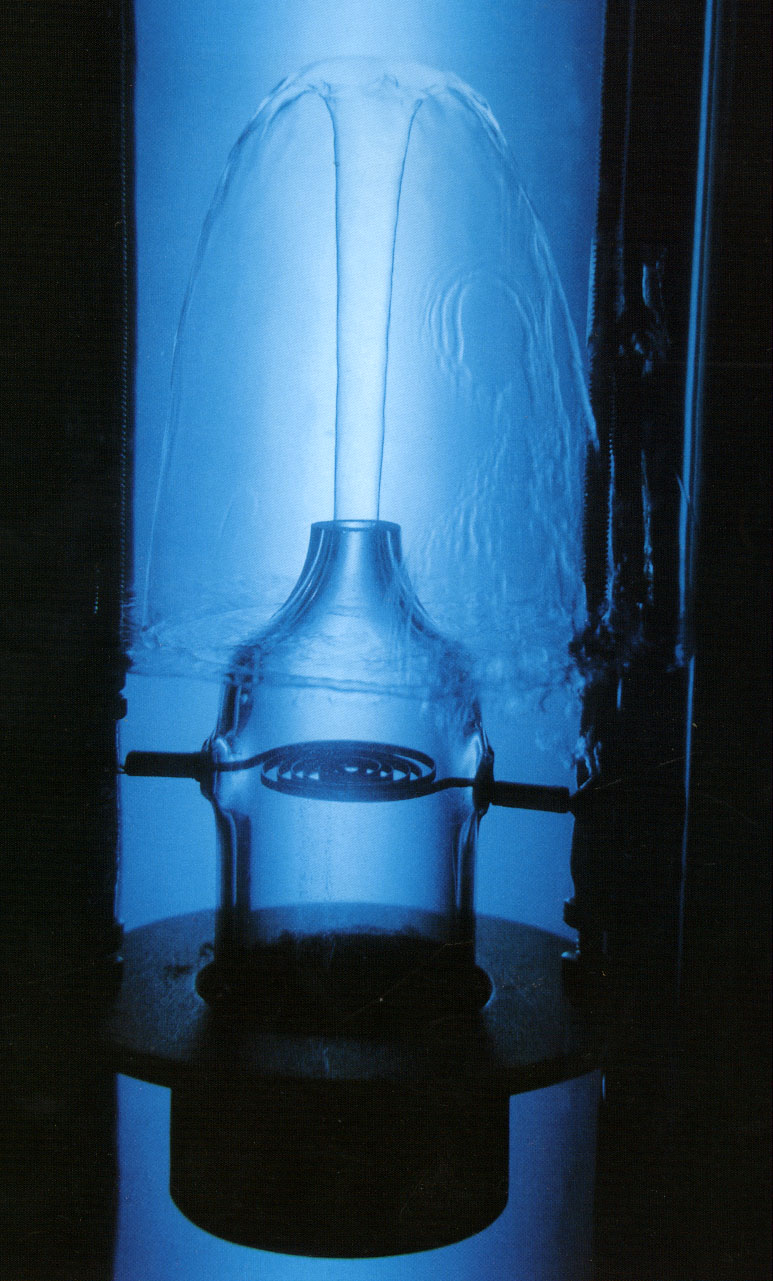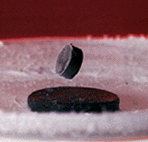Other topics:
Emergence
Strings
Gravity and Cosmology
Condensed Matter Physics
Nanoscience
Quantum Mechanics
Elementary Particles
Quantum Fluids

QUANTUM FLUIDS
The collective properties of matter that we are most familiar with (the most dramatic of which is life) all happen at temperatures where rapid thermal motion is important. However if we cool to very low temperatures, near absolute zero, we enter a very different and strange world, in which very delicate effects coming from quantum mechanics can control the collective behaviour of huge numbers of particles. The first to be discovered were superconducting metals (in 1908), and superfluids like He-4 (in 1938). In these systems, all particles go into the same quantum state, and they then flow with no resistance- allowing He-4, for example, to flow up the sides and out of of a glass container, or through even atomic scale holes. In 1972 a magnetic superfluid (He-3) was discovered, and it was realised that such superfluids probably exist inside many stars- the neutron stars. In a certain sense the fundamental fields of matter in the 'standard model' of elementary particles are also superfluid- the concepts of superfluidity have been crucial in the development of the standard model.
 In recent years even
more bizarre quantum fluids have been found. These
include 'quantum Hall fluids', which exist in
semiconductors in large magnetic fields at low
temperatures- the quantum states existing in these find
their analogues in modern string theory! Only last
year, a dramatic new 'supersolid' state of He-4 was
found- in which solid He-4 also flows like a
superfluid!
In recent years even
more bizarre quantum fluids have been found. These
include 'quantum Hall fluids', which exist in
semiconductors in large magnetic fields at low
temperatures- the quantum states existing in these find
their analogues in modern string theory! Only last
year, a dramatic new 'supersolid' state of He-4 was
found- in which solid He-4 also flows like a
superfluid!
Equally exciting has been the realisation that quantum fluids can be used to bring many of the most striking features of quantum mechanics up to the macroscopic laboratory scale. This has resulted in the development of 'quantum devices' such as 'SQUID's' (an acronym for 'Superconducting QUantum Interference Devices'), in which all electrons are behaving coherently together, like a very well-trained army. Such devices look increasingly likely as candidates for a new 'quantum technology', which will use quantum properties like state superposition in an essential way.
University of British Columbia
Hennings Building, 6224 Agricultural Road
Vancouver, BC V6T 1Z1, Canada